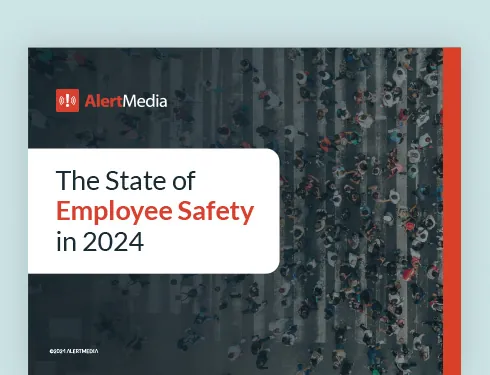
How to Reopen Your Business Safely [+4 Questions to Ask Before You Do]
The decision of whether to reopen is weighing heavily on the minds of many businesses today. Reopen your business with confidence by asking these four questions.

The decision of whether to reopen your business is weighing heavily on the minds of many leaders today. On the one hand, every company wants to keep their employees and customers safe. At the same time, many people and businesses are on the ropes because of the sudden closures caused by this pandemic.
Everyone wants to return to some semblance of “normal.” The questions are simply how and when. In this article, we will discuss both of those questions. We will start by discussing what your business needs to consider before deciding it’s time to reopen. Then we will discuss how to put that plan into action.
4 Questions to Ask Before Reopening Your Business
There is no single right answer to the question: is it time to reopen? The reality is, your business’s answer to that question will depend on a variety of different factors—all of which you need to consider. Here are the four primary elements you need to consider before deciding it is time to reopen.
1. What do the state and local guidelines say?
Obviously, the first and most important consideration is the legality of reopening. While some states are moving full steam ahead towards reopening, others are taking a much slower approach—and some have not even started.
The first step is to figure out what the relevant guidelines are in your area. A good place to start is the state-by-state reopening guidance provided by the U.S. Chamber of Commerce. Every state has determined its own categories of businesses, each with separate guidelines. Make sure you determine which category your business falls under, and that you are complying with relevant guidelines.
Likely, though, you will not be able to get away with only looking at your home state’s guidelines. For one, if you have any locations in other states, those locations must operate under their state’s guidelines. Additionally, many large cities and metropolitan areas have set their own restrictions, which are more restrictive than their state’s guidelines. Make sure to check if your municipality has its own set of rules that you will need to follow. A threat monitoring system can also help you keep track of the local guidelines for each of your locations.
2. What is the risk level for COVID-19 in your area?
The second factor you need to consider before reopening is the severity of COVID-19 in your home area. While you may think that trusting state guidelines is sufficient to account for this factor, it is not.
The fact is, COVID-19 spreads on the local level—not on the national or even state level. This means that even if COVID-19 is relatively well contained on the state level, your county may be in the midst of an outbreak.
This interactive map by Johns Hopkins contains county-level data for the entire country. Make sure your COVID-19 task force is closely monitoring the situation in your local area. If COVID-19 is still severe in your city or county, you should hesitate to reopen your business.
3. How confident are you in your ability to reopen safely?
The third consideration is broader: Is it possible for your business to reopen safely? The answer to this question will likely also be complicated. You will need to consider how your business operated before the pandemic—and what you would need to change to keep your employees and customers safe.
For some businesses, these changes may be minimal. White-collar businesses like law firms and banks, where most employees are already distanced in separate offices, may only need to adapt the way they interact with each other (e.g. no handshakes, a 5-person meeting cap, etc.). Service industry businesses, on the other hand, like restaurants and salons, will likely need to make drastic changes in the way they conduct their work and interact with customers.
Most businesses will fall somewhere in between. You need to determine which category your business falls in, and how and when it will be safe for you to reopen your physical locations.
4. Do you really need to reopen now?
The final consideration before deciding to reopen is how much you need to reopen. Just as different businesses have different capacities to reopen safely, they also have different capacities to operate without reopening. Determining how much your business really needs to reopen is a critical piece of the puzzle.
Ultimately, you need to consider two things: How efficient is your company performing without reopening, and how efficient will it perform after you reopen? Some companies have found ways to operate at nearly the same level of efficiency in a remote working environment. Others cannot operate at all.
At the end of the day, it will always be safer to not reopen—until we have a vaccine or some other way to prevent transmission. There are inherent risks in having people gather outside of their homes in a physical office location. While there are ways to mitigate those risks, the only way to eliminate them completely is to keep physical office spaces closed. So if your business is experiencing little to no lost productivity, consider remaining closed.
Most businesses, however, are experiencing significant profit and productivity losses while they remain closed. Before deciding to reopen, determine just how much your company has to gain from reopening its physical location.
How to Reopen Safely
Once you have determined that it is time to reopen, the question becomes: how? Returning to “business as usual” isn’t an option. Neither is rushing into a reopening without a plan.
An effective reopening has three steps: planning, communication, and execution.
Step 1: Planning
The first step, as in any good strategy, is to make a comprehensive plan for how you intend to reopen. Here are the main issues your company needs to consider as it moves to reopen:
Partial vs. full reopening
Even if you “reopen,” that does not mean that it is necessary (or smart) to bring all your employees back into the office at once. In fact, there are compelling reasons why some sort of “partial reopening” likely makes sense.
The fewer people in the office, the easier it will be to maintain social distancing. By the same token, the more people you have in the office—the higher the risk of infection for everyone there.
You also need to consider that some of your employees are at higher risk than others. For older employees, as well as those who are immunocompromised or have other health issues, COVID-19 simply poses a greater risk. Even if you decide to reopen your business for most employees, see if there are ways to protect your most vulnerable employees—or have them continue to work remotely.
A partial reopening can take several forms. You may want to ask employees to opt into a smaller group who returns to the physical workplace. Or you may set up different groups of employees, who come in at different times. For example, half the company comes in on Monday, Tuesday, Wednesday; the other half comes in on Thursday and Friday. This plan has the benefit that if an employee does test positive, you know that only those employees in their group have possible exposure. Plus, it gives time between each “shift” for you to disinfect all common areas before the next platoon comes in.
As you consider creating your groups, ensure you have redundant responsibilities, skill sets, and systems knowledge separated between each group. For example, do not have your entire leadership team in the office on the same day. To maintain business continuity, make sure Group 1 can back up Group 2 if a significant amount of people are exposed and out sick for an extended period of time.
Hygiene measures
Consider how your business can encourage and enable strong hygiene practices among employees in the office. Some such measures include:
- Setting up hand sanitizer stations
- Opening windows wherever possible to increase airflow
- Encouraging employees to wear masks at all times
- Posting signs depicting how to properly cough, sneeze, and wash hands
- Asking employees to remind each other when they see fellow employees practicing poor hygiene
- Disinfecting workspaces at the end of each day
- Closing or limiting occupancy in high-risk common areas like gyms, meeting rooms, or employee dining areas
Good hygiene is contagious. If you set a strong expectation in your workplace, it will catch on. This can make a big difference in the general health and safety of your office and employees.
Social distancing
By now, just about everyone has heard of the “six-foot rule.” Obviously, this guideline applies to your physical workplace just like it applies to going grocery shopping or exercising. Employees should be staying six feet apart whenever possible.
Consider ways your business can help make this happen in your office. Do you need to move desks around? Or remove some chairs from every conference room? Get creative, and make sure your employees are taking social distancing seriously even when they are in the office. If one of your employees does contract the virus, the six-foot rule will minimize the chance that their single infection turns into a full-scale outbreak.
If it is not possible to enforce the six-foot rule in your workplace, there are other ways to achieve the same effect. Many factories, for example, have set up plastic partitions between workspaces that are right next to each other. Since COVID-19 spreads primarily through the air, this is an effective substitute for physical distance.
Personal Protective Equipment
The mixed messages regarding PPE have left many people confused. As of right now, though, the CDC is recommending that everyone wear face coverings to slow the spread of the disease (while more heavy-duty N-95 masks are left for healthcare workers). Some municipalities are even requiring the use of face masks.
If you reopen, you will likely need to require all employees to wear face masks in the office. You should verify that your workers do have face coverings by sending out a survey to all employees who will be returning to work. The easiest way to do this is by using your mass communication system’s survey capabilities. If they do not have their own, you should have a plan to provide face coverings to your employees.
Depending on the nature of your work, there may be additional PPE that your employees should use. In the food service industry, for example, employees should wear plastic gloves at all times. This also goes for cashiers who will be handling employee credit cards.
Employee health monitoring
One tricky aspect of reopening is monitoring employee health. On the one hand, you as an employer obviously have a vested interest in knowing as soon as possible if one of your employees is sick. But the reality is, there are legal and practical hurdles to mandatory health screenings.
The best course of action is likely to implement a basic screening policy, whereby employees are monitored regularly (e.g. every morning) for a fever, and other COVID-19 symptoms. This type of basic health monitoring is recommended by most states and even mandated by some.
Make sure you are following the law and complying with state guidelines. Even the states that require such screenings allow for considerable latitude in how you conduct them. Some states even specify that an “app-based questionnaire” is appropriate to fulfill this requirement—meaning you can use your emergency communication system to send out a survey each morning, instead of asking each employee personally every day.
One home decor retailer is doing just that—using AlertMedia to survey employees before each shift. Each employee is surveyed for various COVID-19 symptoms before coming in to work, and then receives an automated response based on symptoms reported. If they do not clear the symptoms screening, they are immediately instructed not to come in for their shift and contacted by HR for further assistance.
Operational resilience
You also need to plan for how you are going to mitigate the risks associated with reopening, by taking measures that will increase your operational resiliency. The fact is, your company may need to find a way to keep running after a large personnel hit if an outbreak does happen at one of your offices.
The main way to ensure business continuity in a situation like this is to set up redundancies and try to spread out the risk among different roles/departments. For example, you should consider:
- Cross-training employees, especially for critical roles
- Updating your succession plan for critical roles and leadership positions
- Distributing similar roles among different shifts
- Recommending/mandating remote work for certain critical roles
- Ensuring you have access to a reliable emergency communication system for urgent communications such as possible COVID-19 exposure
These measures will ensure that your business is able to keep the lights on, even if an employee does test positive for COVID-19.
Step 2: Communication
The second step in your reopening process is to communicate your plan. Communication is key to achieving the type of coordination you need for a successful reopening.
Who to communicate with
It is important that you coordinate with all relevant stakeholders when you decide to reopen. Consider how you want to communicate with each of the following groups:
- Employees need to know what to expect when they return to work and how to prepare. You should fill your employees in on every major aspect of your reopening plan—plus why you decided to reopen.
- Customers need to know what this means for them. If your reopening means you are now open for business for the first time since the closure, your reopening should be accompanied by a dedicated marketing campaign.
- Suppliers/Distributors need to know how reopening changes their obligations. If you anticipate substantial changes in your supply or demand, you should communicate this to supply chain partners ahead of time.
How to communicate
All internal communication should be sent out via your mass notification system. EY recommends that communications regarding reopening should be sent over multiple channels (e.g. text, email, voice). This will ensure that your message gets to the right people, as quickly as possible.
Using your emergency notification system will help you keep all the communication regarding reopening in one place. All of your system admins can easily send out the necessary communication using the system, and can also follow up with any employees who respond to your message.
For emergency communication with customers and suppliers, you can work to get them added into your emergency communication system so you have robust tracking and can leverage multi-channel communication methods, or for less critical messaging, you can simply use your existing communication channels. For these messages, the speed and substance of your message will matter more than anything else.
What to communicate
The substance of your messages to customers and suppliers will vary greatly based on your industry and business. Your communication with employees, however, should cover the following bases:
- When you plan to reopen
- Actions taken in their absence (e.g. sanitizing and preparing the workspace)
- New work practices (e.g. health screenings, platoon working)
- New health and safety guidelines
- Resources available if employees have questions/concerns
Make sure to quickly and directly address employee questions and concerns. This is an uncertain time for everyone, and your employees need to know that you are prioritizing their health and safety.
You also need to consider how you are going to communicate with guests to your office (assuming you are going to be allowing guests). Ideally, you should screen the health of all guests who are visiting your office, just like you are doing so with employees.
One large auto-manufacturer is accomplishing this by using AlertMedia’s survey feature to screen guests for COVID-19 symptoms. Only those who respond that they are experiencing no symptoms whatsoever are allowed to visit the office.
Step 3: Execution
Once you have made your plan and communicated it to employees, it is time to execute. What this looks like will largely be dependent on your plan, but there are several important things to keep in mind:
Give employees time to get ready
Once you have decided it is time to reopen, it is tempting to want to rush back in and get things humming again. Resist this temptation.
Your employees need time to prepare to return to in-person work. It may be difficult for some employees to find ways to restructure their lives around going into the office, especially if they have kids who are having to do school from home. Some employees also may need time to return home, after going away to spend their quarantine with family.
Try to give at least a week’s cushion between announcing the reopening and asking employees to be in the office. Your people will appreciate this time to get their lives sorted out.
Remember nothing is set in stone
Even if you have the greatest reopening plan out there, it can all go out the window in a matter of days. Although we may be past the peak of the first curve, we are very likely going to have to continue to fight new curves and keep future outbreaks from overwhelming our healthcare system.
If a second wave comes that is just as serious as the first, it may necessitate a whole new round of lockdowns and closures. For that reason, make sure you always have a backup plan. Just because you are reopening, it doesn’t mean that you won’t have to revert right back to remote working a few weeks or months later.
The businesses that understand this and act accordingly will be the ones who are not caught flat-footed if a second wave does come.
Monitor the threat continuously
Finally, it is crucial that you monitor the state of the pandemic continuously. Until we have a vaccine, the pandemic will continue to be a threat to your business.
If you do not have one already, implement a threat monitoring system like AlertMedia to stay on top of the pandemic. The system will automatically gather the latest information across the world and notify you when an update is relevant to your people or locations. With the situation unfolding by the day—and state guidelines changing seemingly by the hour—you cannot expect to manually keep track of all the relevant information.
An emergency communication system with threat monitoring capabilities like AlertMedia will tie your whole reopening plan together. You can use the system’s communication capabilities to streamline all your internal messaging, and you can rely on the threat monitoring system to stay up-to-date on the pandemic and what it means for your business. Reopening is difficult, but AlertMedia makes it possible to reopen without compromising employee safety or business continuity.




